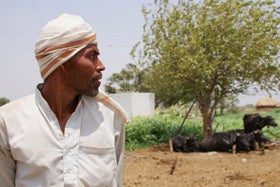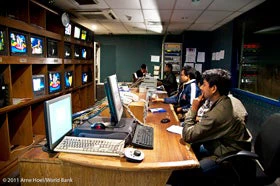 South Asia is among the fastest growing regions in the world, but it is also home to the largest concentration of people living in conditions of debilitating poverty, human misery, gender disparities, and conflict. In my book, Reshaping Tomorrow, I ask if South Asia is Ready for the Big Leap.
South Asia is among the fastest growing regions in the world, but it is also home to the largest concentration of people living in conditions of debilitating poverty, human misery, gender disparities, and conflict. In my book, Reshaping Tomorrow, I ask if South Asia is Ready for the Big Leap.
The optimistic view is that India will achieve double-digit growth rates benefitting the rest of South Asia. The pessimistic view is that growth will be derailed by structural and transformational challenges. Which of these two outlooks will prevail?
The Optimistic Outlook
The optimistic outlook is based on favorable trends, including improved governance, the demographic dividend, the rise of the middle class, and the new faces of globalization.
All countries in the region have an elected government for the first time since independence leading to governance that is more focused on development. Improved governance will enhance the politics of democratic accountability; diminishing the importance of identity politics; and the rates of incumbency – the likelihood of a sitting politician being re-elected – are down.
In South Asia, the demographic dividend means that more than 12 million new workers will join the labor force, every year, for the next two decades. This is more than the entire population of Sweden. The demographic dividend will accelerate growth and increase savings that will allow for greater investments infrastructure and technology and swell the size of the middle class. India’s middle class (daily expenditure of $10-$100 in PPP terms) will increase from 60 million in 2010 to more than one billion people by 2025. Growth, education, home ownership, formal-sector jobs, and better economic security are causes and consequences of an expanding middle class.
The world has already benefited from the trade of goods. New faces of globalization will focus on the trade of services. The world is experiencing a third industrial revolution with the services trade being at the forefront of this revolution.
Services are characterized by growing tradability, increasing technological sophistication, and lower transport costs. Trade of services is the fastest growing component of world trade during the last two decades. Another opportunity is the incentives for labor mobility, as current demographic trends suggest a rapidly ageing population in OECD countries, and a young population in India and South Asia. This generates a opportunities for improved global efficiency. But there is an alternative outlook.
The Pessimistic Outlook

Growth could be derailed by spatial transformations, poor infrastructure, lack of entrepreneurship, deep pockets of poverty, large informal sectors, huge social and gender disparities or high levels of conflict in the region. Rapid growth has produced billionaires in India. However, the broad character of the region remains agrarian and rural. Industries and services can still rapidly pull the underemployed workers in agriculture into gainful employment with decent wages.
Entrepreneurship is central to job creation. While the great economic minds throughout history recognized the link between entrepreneurship and job creation, controversies remain. Our understanding of entrepreneurship is still at an early stage. While India has a disproportionately high rate of self-employment and many small firms, this has not readily translated into as many young entrepreneurial firms as hoped. There is huge disparity in entrepreneurship across states in India with formal-sector job growth the strongest in regions and industries that have exhibited high rates of entrepreneurship and dynamic economies.
However, the informal sector remains overwhelmingly large and persistent accounting for over 99% of establishments and 80% of employment in manufacturing. The transformation of the unorganized sector is important to India’s modernization, growth, and attainment of regional economic equality.
Most countries in South Asia are currently immersed in, or are just emerging from, conflicts of varying nature and scope, ranging from the recently ended civil wars in Sri Lanka and Nepal and insurgency in Afghanistan and Pakistan, to low-level localized insurgency in India. The result is human misery, destruction of infrastructure and social cohesion, and death. The effects are huge.
South Asia is home to the largest concentration of poor people in the world. More than one billion people lived on less than $2 a day in 2005. Nearly 250 million children are undernourished. Child mortality and malnutrition levels are among the highest in the world. More than one third of adult women are anemic. One woman dies every five minutes from preventable, pregnancy-related causes. The share of female employment in total employment is among the lowest in the world, and gender disparities are deep and widespread in South Asia.
Let me know whether you support the positive or negative outlook and do share your thoughts in the comments below.
Next week, I will discuss what I believe can and should be done today to reshape tomorrow to realize the optimistic outlook.


Join the Conversation